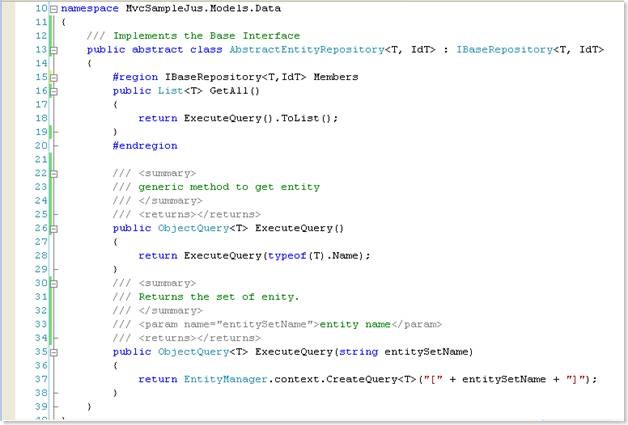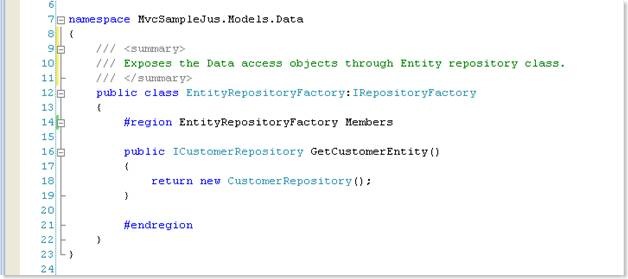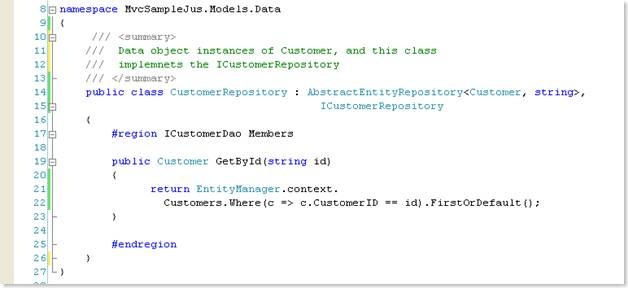Repository pattern provides more object oriented way of encapsulating objects of the data store and operations can performed through neatly separated data classes. Please find below how Repository pattern implemented with entity framework and is consumed using asp.net mvc. Use either StructureMap or Ninject for dependency injection of the Entity Repository Factory object to the Controller classes.
Let us look at the Solution Structure first,
Inside the Models, there is two folders DataInterfaces and Data. DataInterfaces folder contains Repository Interfaces and Data folder contains the Operating classes.Created NorthwindEntities using entity framework with Northwind Database.
Class Diagram of Repository
IBaseRepository
Defines the interfaces that has the generic functionalities, which is need to be implemented in all repositories.
IRepositoryFactory
Factory interface for the repositories, defines the interfaces to access the data objects, in this case customer object.
ICustomerRepository
Entity specific repository, this is how the behavior of the object can be extended and can implement specific methods for the particular object.
AbstractEntityRepository
This abstract class implements the Base interface method for all repositories.
EntityRepositoryFactory
Entity repository Factory class, through the data objects are exposed.
CustomerRepository
Data object classes implements the object repository, in this case ICustomerRepository.
EntityManager
Provides the shared instance of the Entity Framework.Implemented using singleton pattern with nested class.
CustomerController
Before the controller implementation, run the test through the CustomercontrollerTest class.
Please see below, how this is implemented in the controller class. Using either StructureMap or Ninject for dependency injection of the Entity Repository Factory object to the Controller class.And refer the related entity i.e. Customer Entity in this case using GetCustomerEntity() and call required method.
This completes implementation of sample method, Now ready to run the application. See the results below. Improved the look and feel using design template from http://www.ASP.net/mvc/gallery.











